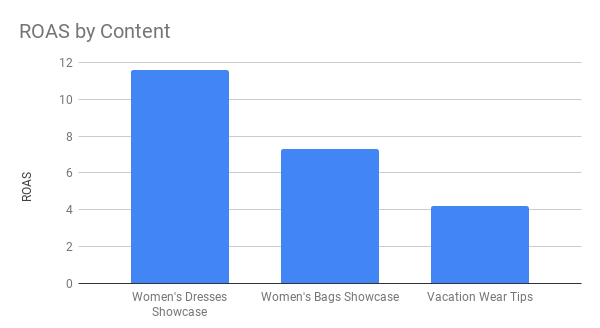I’ve written here before about the transformation in user behavior caused by The Great Upheaval, and the dramatic increase in ecommerce sales as a result.
As the number of online purchases continues to increase, and Q4 fast approaching, I want to take a closer look at using content to drive sales on Facebook. Let’s dive in.
Talking Intent
There’s a bit of a challenge when it comes to using in-feed content to drive direct purchases. Namely, user intent. Let me break it down:
When you’re scrolling through your Facebook feed, you’re not actively looking to buy anything. Your intent is to engage with your social network and consume content. If you want to buy a winter coat online where would you go first? Maybe your favorite eCommerce fashion site. Maybe Amazon. Maybe you’d go on Google and search for “best winter coats”. Facebook is probably not first on your list.
That doesn’t mean that nobody purchases when they’re on Facebook. On the contrary, there are countless eCommerce advertisers that are driving sales. I’m pretty certain that the feeds of every person who reads this are packed with product carousels and image ads encouraging them to buy stuff.
That being said, product carousels are quite a different beast than promoted content. When a person clicks on a product carousel in their feed, they know they’re clicking on it to shop. And while this approach is a great way to target intent, it can also be expensive and limit scale.
Using content to drive sales on Facebook can reduce CPCs, increase your reach, and improve brand affinity. Because of these three factors, we’re seeing high ROAS (return on ad spend) when using content to drive sales. But to make it work, you need to get your content strategy right.
Before jumping into the content aspect, I do want to point out something important. There is a staggering amount of strategy and planning that goes into a successful eCommerce campaign from content to targeting to ad formats.
At Keywee we’ve perfected the art of eCommerce campaigns and there’s a lot of accumulated knowledge to share. But for today, I want to focus on content. As an aside, don’t hesitate to reach out if there’s another aspect you’d like me to cover in the future. With that being said, let’s get down to brass tacks.
Content That Drives Intent
As I wrote above, intent is key to driving purchases, and there are simple content strategies that will help you suss out intent. The basic rule of thumb is to set up user expectations. Let’s go back to my winter coat example from above to illustrate this:
You’re scrolling through your Facebook feed, and you see an article titled “5 Tips to Spice Up Your Winter Wardrobe”. When clicking on that, your expectation is to get tips. Does clicking on it mean you’re looking to buy a winter coat? Of course not.
You’re clicking on it expecting exactly what the title says. Maybe you’ll learn how to mix and match colors, or a stylish way to tie your scarf. Maybe you’d like to get a recommendation on items of clothing to buy, but that is on the verge of coincidence. Clicking on this article does not in any way mean you want to buy a winter coat, even if the content is hoping to sell you one.
Let’s go back to scrolling through your feed. You come across an article titled “5 Great Coats to Spice Up Your Winter Wardrobe”. What are you expecting to get when you click on that? Clearly you’re looking for a showcase of winter coats. You’re interested in those winter coats. You may even want to buy those winter coats. You’ve raised your hand and said “This is relevant to me”.
Content; meet intent.
Let’s look at this in practice, with various articles showcasing women’s fashion:
The specificity of “Women’s Dresses” vs a more abstract “Vacation Wear” is most likely a factor here in terms of performance. The other factor is that one is a clear product showcase whereas the other is a more meandering recommendation article, less focused on a specific product type and less transparent about what the user will encounter post-click.
The first article type qualifies the user as having interest. The other less so. The difference in ROI is dramatic. That being said, that’s not the only tool in your toolbox. The article matters, but the image does as well.
Creative Juice
When it comes to driving intent with the right creatives, the image on your Facebook ad has a huge impact. Testing multiple images is of course critical not only in determining whether a user will take action but also in determining the quality of that action.
For example, we recently ran a test comparing images of high-end items to those with items at a lower price point. The higher-end images resulted in an average order value that was 30% higher.
A couple of other interesting insights:
- Close-ups of people modeling a product drove a return on ad spend that was 42% higher than images from further away.
- Images featuring women drove higher volume compared to images featuring just a product, or featuring men.
Of course, when running any campaign it’s important to constantly test out different images and products to see what works best for your particular campaigns. But the above can certainly be a good place to start.
No Time Like the Present
Even though things have changed, this year’s Q4 is expected to be mammoth when it comes to eCommerce, and CPCs will start to spike the closer we get to the biggest shopping days. Content is a great way to drive sales but there’s always a learning curve. That means that the ideal time to test out what works best for you is here and now.


